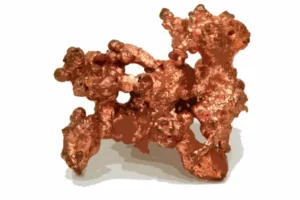The mining industry plays a vital role in the global economy, providing essential raw materials for various sectors. However, mining activities can have significant environmental consequences if not conducted with sustainable practices. In recent years, there has been an increasing focus on evaluating the environmental impact of mining operations, including those related to copper extraction. In this comprehensive article, we will delve into sustainable mining practices and examine the environmental impact of copper stocks, providing insights for investors concerned about environmental sustainability.
- Importance of Sustainable Mining Practices:
Sustainable mining practices aim to minimize the environmental footprint of mining operations while ensuring the responsible extraction of minerals. These practices encompass a range of strategies, including minimizing waste generation, conserving water and energy, reducing greenhouse gas emissions, protecting biodiversity, and promoting community engagement and consultation.
- Environmental Impact of Copper Mining:
Copper mining, like any other mining activity, can have several environmental impacts, such as:
a. Land Disturbance: Mining operations can lead to extensive land disturbance, including deforestation, soil erosion, and habitat loss. Open-pit mining, a common method for copper extraction, often involves removing large amounts of topsoil and vegetation, altering ecosystems.
b. Water Pollution: Mining operations generate wastewater that may contain heavy metals and other pollutants, posing a risk to water bodies and aquatic ecosystems. The release of acidic mine drainage can further exacerbate water pollution issues.
c. Air Pollution: Dust emissions, especially from blasting and excavation activities, can contribute to air pollution. Additionally, smelting and refining processes involved in copper production can release sulfur dioxide and other harmful gases, contributing to air pollution and acid rain.
d. Energy Consumption: Copper mining and processing require significant energy inputs, contributing to greenhouse gas emissions and climate change. The reliance on fossil fuels for energy generation further intensifies the environmental impact.
e. Waste Generation: Mining operations generate substantial amounts of waste, including overburden, tailings, and mine waste rock. Improper management of these wastes can lead to contamination of soil, water, and air.
- Sustainable Mining Initiatives:
In response to growing environmental concerns, the mining industry has adopted various sustainable mining initiatives, including:
a. Environmental Impact Assessments (EIAs): Mining companies conduct EIAs to evaluate the potential environmental impacts of their operations and develop mitigation measures. These assessments help identify sensitive areas, assess biodiversity values, and involve stakeholders in decision-making processes.
b. Water Management: Sustainable water management practices aim to minimize water use, recycle and treat wastewater, and implement water conservation measures. Technologies such as advanced water treatment systems and water recycling can reduce the environmental impact of mining operations.
c. Energy Efficiency and Renewable Energy: Mining companies are investing in energy-efficient technologies and transitioning to renewable energy sources to reduce greenhouse gas emissions. The use of solar power, wind energy, and innovative energy storage solutions can contribute to more sustainable mining practices.
d. Waste Management and Tailings Stewardship: Proper waste management, including the responsible storage and treatment of tailings, is crucial for minimizing environmental impacts. Utilizing advanced technologies, such as dry stack tailings management systems, can reduce the risk of tailings dam failures and associated environmental disasters.
- Evaluating Copper Stocks from an Environmental Perspective:
Investors interested in copper stocks can evaluate companies based on their environmental performance and commitment to sustainable practices. Consider the following factors:
a. Environmental Policies and Compliance: Assess a company’s environmental policies, commitments, and compliance with applicable regulations. Look for companies that go beyond compliance and actively pursue environmental stewardship.
b. Environmental Management Systems: Companies with robust environmental management systems and ISO 14001 certification demonstrate a structured approach to managing environmental impacts.
c. Emission Reduction Targets: Review a company’s emission reduction targets and initiatives. Consider their efforts to reduce greenhouse gas emissions, improve energy efficiency, and invest in renewable energy sources.
d. Waste Management Practices: Evaluate how a company manages waste, particularly tailings and mine waste rock. Look for companies implementing advanced waste management technologies and actively working to minimize waste generation.
e. Stakeholder Engagement: Companies that engage with local communities, Indigenous groups, and environmental organizations demonstrate a commitment to addressing community concerns and minimizing environmental impacts.
Sustainable mining practices are crucial for evaluating the environmental impact of copper mining operations and related stocks. While the industry faces environmental challenges, sustainable initiatives are being adopted to mitigate these impacts. Investors interested in copper stocks can contribute to environmental sustainability by considering companies’ environmental policies, compliance, emission reduction targets, waste management practices, and stakeholder engagement. By supporting companies committed to sustainable mining practices, investors can play a role in promoting responsible resource extraction and a more environmentally conscious mining industry.

